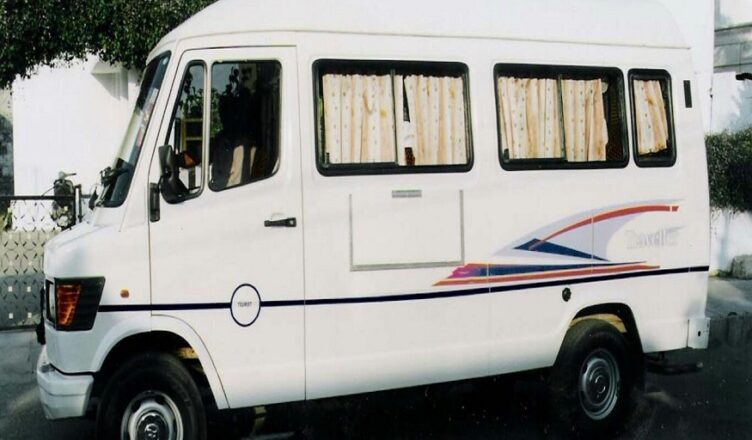Chandigarh, renowned as one of India’s most liveable cities, is approximately 250 miles from Delhi. It is a testament to India’s pioneering efforts in comprehensive city planning, marking a significant milestone in the country’s urban development history. It takes about 4 hours to reach the city by car. By reserving a taxi from Chandigarh to Delhi you can enjoy the scenic suburban landscapes and savour the delightful local cuisine along the way.
Chandigarh’s history is more complex than merely its buildings. Let’s explore its extensive past.
Chandigarh City Planning: Creating Urban India
The capital of Punjab and Haryana, Chandigarh, is a union territory in India. It is recognized internationally for its architecture and urban design and is one of India’s first planned cities. Jawaharlal Nehru, the very first prime minister of India, visited the potential future site of this city in 1952 and declared it to be a new town. It became a representation of India’s independence, free from restrictions imposed by the past. The city was a statement of the country’s hope for the future after independence.
Chandigarh’s urban design is one of the few master plans in the world that successfully combined magnificent construction, development of culture, and contemporary design.
Urban Design Idea of Chandigarh
A city is the product of town planning, architecture, and landscape design. It is both a sociological organism and an artwork. City planning gives birth to urban design. Meanwhile, the city’s architecture brings life to the city as an organic whole. Chandigarh’s architecture evokes a distinctive urban form, which can cause any ordinary person to feel strong psycho-social associations.
Thus, Chandigarh differs from other cities due to various factors. Here are some of the positive features of Chandigarh’s urban design.
- Cleanliness and Greenery: The idea of a “Green City,” based on the planning principles of “Sun, Space, and Verdure,” is implemented in Chandigarh. It has a clean, balanced environment and rich surroundings. It also has carefully planned arboriculture (planting trees along the sides of roadways).
- Accessible and Clean Roads: The principal highways are oriented to provide a continuous vista of the Shivalik Hills. Every road in Chandigarh is divided into several categories, clearly defining the functions of these roads. For example, the V3 route is blocked off from all sectors by a wall.
- Well-Planned Construction: In its initial phase, the city started inculcating low-rise, low-density construction. Its urban legislation promotes the built environment’s harmonious growth. A comprehensive range of structural monitors, planning, building regulations, etc., are used to manage the city’s urban form.
Picking Chandigarh’s Location
The Government of Punjab established a committee in 1948 to assess and evaluate the existing towns in the state. Among the evaluated towns, one town would become the proposed location of Punjab’s capital. P.L. Verma, the Chief Engineer, served as the committee’s chairman. However, none were deemed viable due to various factors. It included the vulnerability of armed forces, lack of clean water, inaccessibility, inability to handle refugees, etc.
The current location was chosen in 1948 while taking into account several factors. This included geographical elements like soil fertility, a steep slope for natural irrigation, and a pleasant climate. It also considered the presence of an adequate water supply, proximity to the national capital, and more.
Plan of Chandigarh
Chandigarh is an administrative town with a population of 5 lakhs. Hence, its sectors were allotted different functions. Sectors 1 to 30 comprised the first phase of Chandigarh’s construction, and Sectors 31 to 47 comprised the second phase.
The CIAM (Congress Internationaux d’ Architecture Moderne) Theories, which define the four fundamental city functions, were the foundation upon which the city was planned. Each section of the city follows these theories. Here’s the list of every theory and its corresponding area:
- Working Areas: Sector 17 of the Capitol Complex and Jan, Madhya, Himalaya, Udyog, and Dakshin Boulevards constitute this theory.
- Resources for Body and Spirit: Leisure Valley, Sukhna Lake, parks, green belts, cultural belts, and educational belts follow this theory
- Proper Circulation: A 7-vector and a modular grid-iron network of roads prescribed to this point.
- Holistic Living Spaces: Remaining sectors of Chandigarh are dedicated to this theory.
Le Corbusier envisioned the Chandigarh Master Plan as resembling a human body. The Capitol Complex and Sector 1 formed the head, while the City Centre and Sector 17 formed the heart. The city’s lungs were formed by Leisure Valley, public parks, and neighbourhood green spaces. Intellect was concentrated at Chandigarh’s cultural, industrial, and educational institutions, and the network of roadways and 7Vs formed the circulatory system.
Green City Ideas
Chandigarh was designed as a green city, ensuring every residence has ample sun, space, and vegetation elements. The green belt’s position was chosen to connect all sections with the Shivalik range of hills and mountains in a north-south orientation.
- Theory of 7V’s: Le Corbusier’s V7s road system directs traffic into the city and distributes it to the housing unit. Roadways linking Chandigarh to other cities are called highways (V1). Marg describes the key roads (V2), while paths describe the less significant streets (V3). Circular shopping streets are V4 roads, and V5 roads are used for proper sector circulation. Minor roads like V6 roads are used for house access, while footpaths and bike lanes comprise the V7 road range. Buses operate only on V1, V2, V3, and V4 roads.
- Development at Low-Cost: Originally intended to be a low-rise city, it has grown under the stated principles and, sixty years after its founding, still largely adheres to the original idea.
- Hierarchical Population Distribution: Population density is distributed hierarchically, starting in the northern regions and progressively moving south.
- Planning for Only Land Uses: The Master Plan’s underlying land use distribution premise divided the land into separate areas for dwelling, working, trade and commerce, industry, etc. As a result, the sectors were set aside for institutional, commercial, and industrial applications.
Summing It Up
Over time, modifications to Chandigarh’s initial planning have been suggested. Additional townships, a technology park, high-rise towers, and recreational amenities were included. The city has much to offer, and you can learn more about it depending on your interests. You can reserve a hassle-free tempo traveller in Chandigarh for outings with friends or family. Savaari Car Rental has your back if you want to reserve a traveller. Hence, you can enjoy your journey and create priceless memories with your loved ones.

